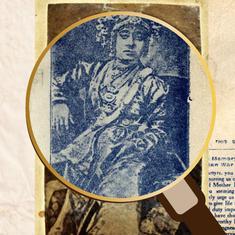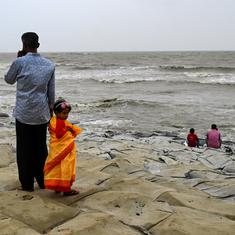At a recent meeting of my book club, my friend mused, “Was Gone Girl the first book with an unreliable narrator?” And to my mind an answer formed as clearly as though I was reading off a question and answer test prep sheet. “No, there was Rebecca.”
Daphne Du Maurier’s wronged wife, the “other woman” to the mousy unnamed narrator, the drowned woman whose spectre loomed large over Manderley, that perfect first sentence that echoes in one’s brain for long after the book has been closed and put aside: “Last night I dreamt I went to Manderley again.” There was no doubt that something had caused me to remember Rebecca vividly, and the culprit was Paula The Girl On the Train Hawkins’s new book Into the Water.
Hawkins continued the tradition of the unreliable narrator from Gillian Flynn, and those two “Girl” books were so popular, that a book publicist told me recently that books with “Girl” in it were generally selling better than their ungendered counterparts. It could be argued that an “Into” title would also be more popular – I was instantly attracted to Into the Water because of my love of Irish murder mystery writer Tana French’s series, which begin with Into the Woods.
Then there’s Into the Wild, which has nothing to do with murder, but does have a mystery, Into Thin Air, ditto. All very popular books – but since it’s already been argued that there are only nine original plots, let’s assume there are only so many types of book titles to go around as well.
Power of ten
But Into the Water is not just one unreliable narrator – it is at least ten, and it’s not just the narrator we’re concerned with, it’s the mystery itself. Is it even a mystery? It seems straightforward – a woman drowns, she probably jumped. A suicide is sad, but not a thriller.
At first glance, it’s like the reader is only unpacking sorrow – the mother of another girl who killed herself the same way, the detectives assigned to the case, the daughter of the woman, the estranged sister, the mad old lady who claims to speak to spirits. And through it all, a river runs.
No, I didn’t begin by thinking of Rebecca. Instead, I thought of Amy March, and the incident at the beginning of Little Women where she burns her sister’s journal, then follows her to go ice skating and falls through the ice. There is a moment, a very brief moment, where you think Jo might let her drown, she stands very still and lets Laurie do the rescuing, but in the short scene that follows, Jo is repentant and Amy is forgiving.
Into the Water deals primarily with Jules, the fat sister, the younger sister now grown up, and how the drowned woman – her sister Nel – treated her when they were both children. Except Jules is Amy and Nel is Jo, but it is more complicated than that, isn’t it always?
Sister act
As much as Into the Water is a straightforward mystery – was it foul play or was it not? – it is also a story about sisters, one beautiful, cutting and bright, the other slow, obese and prone to watching from behind doors. There’s not so much mystery writing around brothers – but sisters abound.
Perhaps it’s because of the eternal mystique of the teenage girl, if you were one, you know there was a moment in your life where you were the most powerful person in the world, even in a very small, ordinary way. No matter what kind of teenage girl you were – popular, quiet, shy, confident – there was that one year when you realised that you were infinite, that the world fell away in front of you.
There is one such teenage girl in Into the Water as well, the deceased woman’s teenage daughter, Lena. If you’re familiar with teen soaps like Gossip Girl or Pretty Little Liars, you know this girl. She is beautiful, she is poised and she is terrifying.
It would be too easy to observe Lena from the outside, watch her little machinations, watch her perfect life crumble before her, but in her point-of-view chapters, Hawkins manages to capture that teetering-on-the-edge feeling, you’re still a little scared of her, but at the same time, you recognise she’s just a child, so you begin to grow tender, much like Jules does, not all at once, but a gradual mothering.
One too many?
I was more interested in the women in the novel, the alive and the dead, but the men deserve a mention too. You get glimpses into their lives, but not quite such a deep exploration of their minds. I wonder if Hawkins had too many points of view, it’s a sort of seasick feeling to have one unreliable narrator, with ten, I was shuttling back and forth between the voices, wondering which one to place my faith in.
And when the twist came, I was almost prepared for it, because I spent the whole novel being suspicious of everyone. There are books where multiple voices only heighten the tension – Liane Moriarty’s Big Little Lies is a good example of this – but in this case, I feel that cutting out just two of the points of view could have led to a more gasp-y ending.
But Hawkins is a skilful writer, and my quibble is only a minor one. Her descriptions of people and places made me feel as though I was right there, and the drowned woman is an immortal victim, all the way from Ophelia to Virginia Woolf.

Into The Water, Paula Hawkins, Doubleday.










